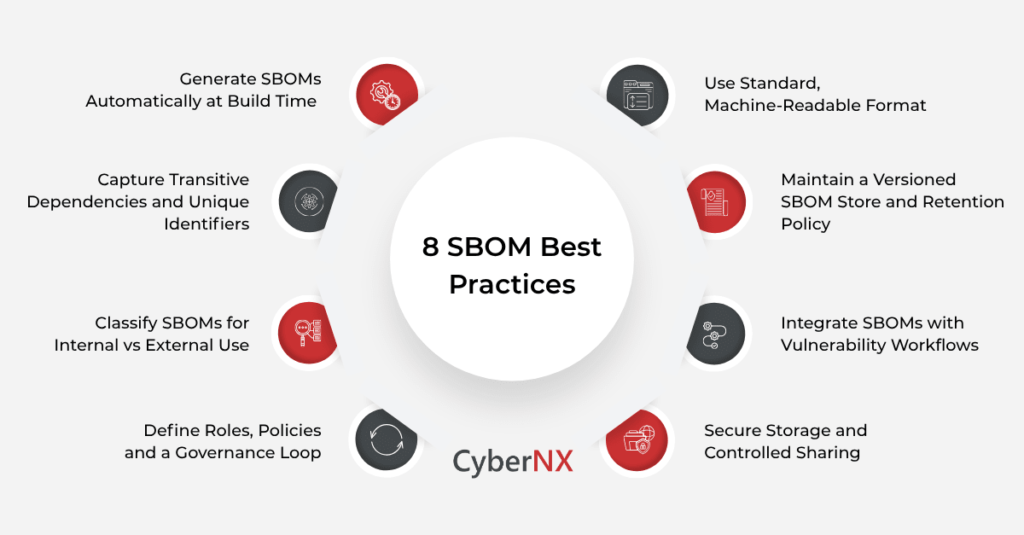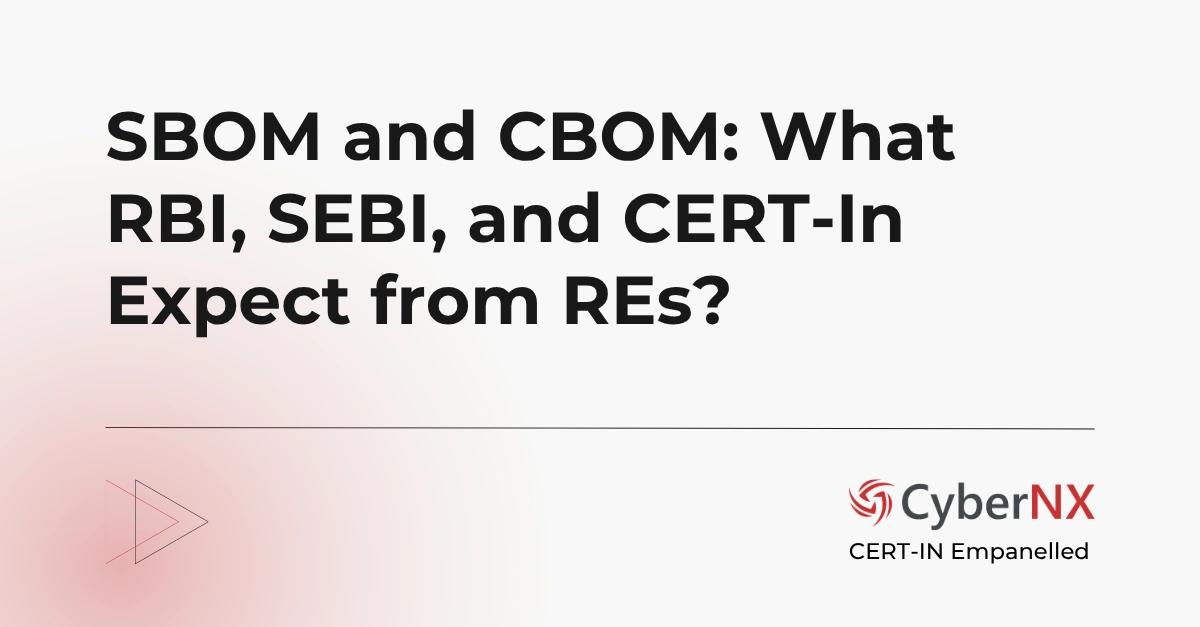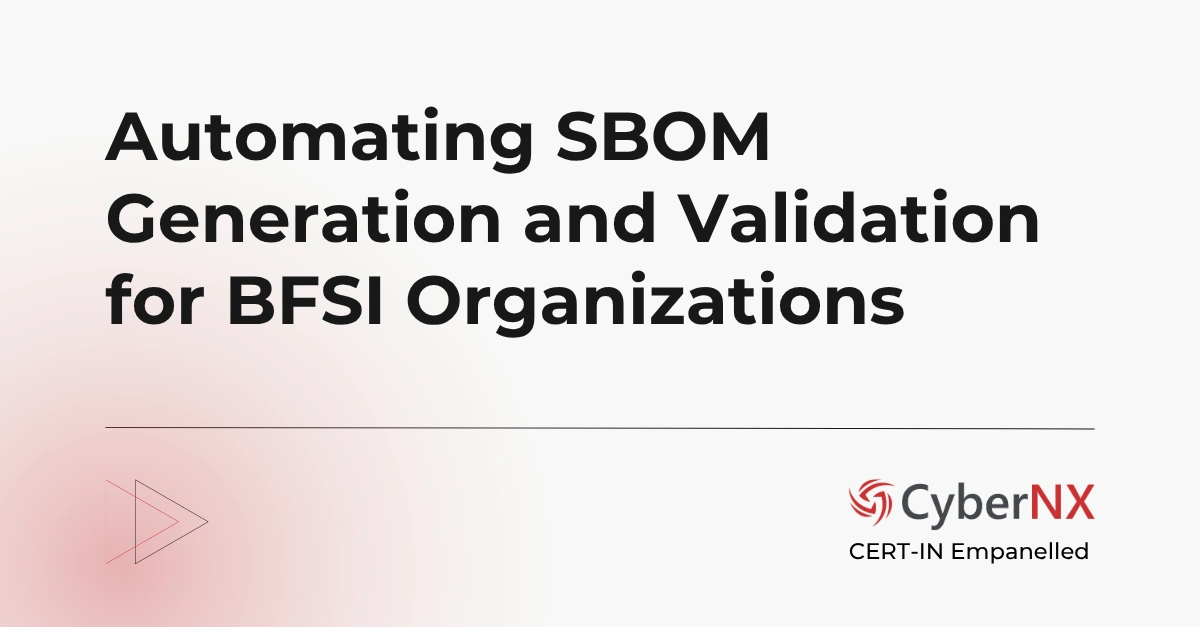Software Bill of Materials (SBOM) helps with two things: transparency in your software and tracking of vulnerabilities. Many organizations know the importance of generating SBOMs but don’t quite get the maximum out of it. As a result, software supply chain in DevSecOps environment may suffer. This is where you need to be thorough with the fundamentals and SBOM best practices to create documents that boost security.
Understanding Software Bill of Materials
At its simplest, a Software Bill of Materials (SBOM) is a structured inventory of every package, library and transitive dependency inside a build. This includes versions, suppliers and identifiers. Good SBOMs also record timestamps, authorship and component relationships. This eventually helps you trace where a risk came from and when it arrived.
Experts list key fields every SBOM should include (component name, supplier, version, unique IDs, dependency relationships, author and timestamp). Those fields turn a static list into actionable intelligence.
Take a deep dive into Software Bill of Materials topic with our blog SBOM Guide.
How SBOM Integration Enhance Supply Chain Security?
SBOMs shorten the time from vulnerability disclosure to remediation. Instead of manually hunting through deployments, teams map a known bad component to all affected assets in minutes.
When paired with VEX/CSAF or vulnerability feeds, SBOMs let you automate impact assessments and prioritize fixes where they matter most. This integration also supports better procurement and contractual controls. If suppliers must provide sanitized “shared” SBOMs, buyers get the clarity they need without exposing IP. Treating SBOM generation as part of CI/CD – not an afterthought – is where ROI shows up.
SBOM Best Practices
Below are the practical, leadership-friendly SBOM best practices our experts recommend. This will help you act or ask the right questions in a boardroom or an engineering review.
1. Generate SBOMs Automatically at Build Time
Make SBOM generation a mandatory step in CI/CD and tie each SBOM to a specific artifact (build ID + commit). This ensures provenance and reduces human error. Our SBOM experts, based on their research and experience, emphasize build-time SBOMs as the baseline.
2. Use Standard, Machine-Readable Formats
SPDX and CycloneDX are the current standards for interchange – pick one (or support both) so your tooling, vendors and customers can interoperate without brittle custom parsers. Certification and tooling ecosystems already target these formats.
3. Capture Transitive Dependencies and Unique Identifiers
An SBOM that omits transitive libraries or lacks hashes/IDs will prevent you from seeing real risks. Include package hashes, CPEs or SWID tags so that matching to advisories is precise.
4. Maintain a Versioned SBOM Store and Retention Policy
Retain SBOMs per released version and don’t overwrite. Historical SBOMs are how you prove a system’s state at the time of a breach or audit. Experts recommend storing SBOMs in a managed SBOM registry.
5. Classify SBOMs for Internal vs External Use
Produce a full internal SBOM with all details and a sanitized shared SBOM when disclosing externally. This protects IP while enabling partners and regulators to assess risk. CERT-In guidelines make this distinction explicit in its distribution recommendations.
6. Integrate SBOMs with Vulnerability Workflows
Link SBOM data to SCA, ticketing and patch-tracking systems so that a newly published CVE creates a measurable remediation workflow with SLAs. Use VEX/CSAF to record exploitability context and avoid noisy false positives.
7. Define Roles, Policies and a Governance Loop
SBOM success is as much about people as tech. So, appoint owners (security champions, product owners) and set update cadences (on patch or change). Also, run periodic SBOM audits for completeness. Many leading researchers and practitioners stress embedding SBOM into SDLC and governance.
8. Secure Storage and Controlled Sharing
SBOMs can reveal architectural detail. Apply access controls, encryption and signed SBOMs where necessary. Plus, use tokenized sharing for third-party review. SBOM experts caution about careless public disclosure without sanitization.
Why Should You Follow SBOM Best Practices?
Because speed and trust matter. An audited, automated SBOM program reduces mean time to detection and remediation (MTD and MTR) and lowers compliance friction. It also turns software transparency into a competitive advantage when bidding for enterprise or government contracts. For boards and executives, SBOM maturity is now a measurable indicator of cyber-resilience and vendor governance. Organizations that treat SBOMs as living assets see fewer shock fixes and clearer regulatory conversations.
Besides the best practices, you should also avoid certain SBOM mistakes that could weaken your security defences. Know all about them in our blog post SBOM Mistakes to Avoid.
SBOM Requirements as per Latest CERT-In Guidelines
CERT-In’s technical guidance (released as part of India’s broader BOM guidance) asks organizations to:
- Adopt standard formats (SPDX/CycloneDX)
- Produce SBOMs for builds and updates
- Support VEX/CSAF pairings
- Maintain internal and shared SBOM variants
- Integrate SBOMs into procurement and audit trails.
The guidance also expands BOM thinking beyond software to AI, cryptography and hardware BOMs. This signals that traceability expectations are broadening. If you operate in India or supply Indian public-sector customers, map your SBOM program to CERT-In’s checklists and evidence requirements now.
Learn in-depth about this latest development in our blog CERT-In’s SBOM Requirements.
Conclusion
Start small, automate steadily and treat the SBOM as the single source of truth for component risk. The right SBOM program reduces firefighting, improves vendor conversations and gives executives defensible evidence of due diligence.
If you leave one takeaway in the inbox of your security lead: turn SBOM generation into an automated, versioned and auditable step in CI/CD. Everything else becomes easier. Yes, SBOM best practices take engineering effort up front, but they pay dividends when the next widespread vulnerability lands on the front page.
Our in-house SBOM management tool enables automation and provides you deeper visibility into software components. Get in touch with our SBOM experts to discover our full range of capabilities and how we can strengthen your software supply chain.
SBOM Best Practices FAQs
What are the key benefits of implementing SBOM best practices?
Implementing SBOM best practices improves visibility, accelerates vulnerability response, simplifies compliance, and builds stronger trust with customers and regulators.
How often should SBOMs be updated?
SBOMs should be generated automatically at every build or software update to ensure accuracy and ongoing traceability.
How do SBOM best practices help with regulatory compliance?
They align your software supply chain processes with evolving guidelines like CERT-In, NIST, and U.S. Executive Order 14028, making audits smoother and reducing compliance risk.
Can SBOMs be shared with external stakeholders without exposing sensitive details?
Yes. By creating sanitized SBOM variants, organizations can provide transparency to customers and partners while protecting intellectual property.






